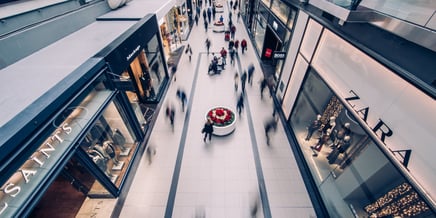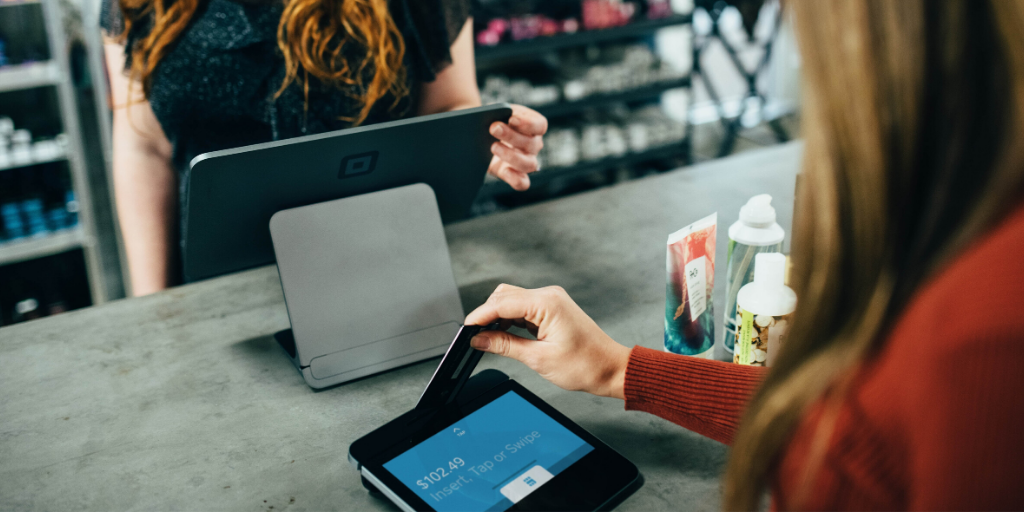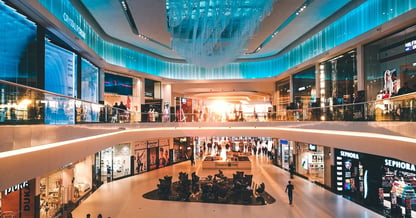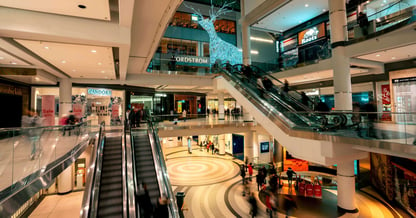
How to Effectively Measure Conversion in Retail | WiFi SPARK
Online retailers track all kinds of analytics that tell them exactly how many people visit their websites and which of them leave without making a purchase....
Read more

Smart retail gives consumers the best possible experience while shopping by utilising innovative smart technologies. Retailers can use this tech to enhance customer experience, boost brand loyalty and drive revenue. Here are some of the smart retail technology tools that are currently in use.
Today’s customers don’t want to pay for their purchases with cash. Getting cash from an ATM is a hassle and no one likes dealing with loose change. In the UK, contactless spending reached an annual figure of £69 billion recently with the method accounting for 40% of all card transactions.
Those figures are only going to rise. Apple Pay allows consumers to pay with their phones, tablets or even their smart watches while more and more of us are receiving contactless cards.
Currently, contactless is only viable on transactions that cost less than £30 although 42% of users want that limit to rise. It’s only a matter of time before it does. Retailers that don’t offer seamless POS (Point of Sale) capabilities are dwindling. Think how awkward it can be when a shop doesn’t accept cards and you don’t have any cash.
Customers now expect to be able to use contactless and similar technologies wherever they go. By not keeping up with these expectations, you’re already falling behind the competition and giving customers a reason to shop elsewhere. Implement smart POS technologies to give your customers a fast and easy way of making a purchase.
iBeacon Insider defines iBeacons as technology that allows mobile apps ‘to understand their position on a micro-local scale and deliver hyper-contextual content to users based on location.’
Basically, they’re these smart technology devices that broadcast radio signals to a consumer’s smartphone once someone is close enough. They’re only small and are perfect for hiding out of sight but they’re very clever.
Imagine you’re an electrical appliance store that sells fridges. As a customer gets close to a fridge, the sensor can ping them a notification. Once accepted, the shopper can access all of the information they could ever need about that particular fridge - reviews, sizes, energy ratings, colours and more.
Perfect on a busy day when the store assistants are in high demand, the sensors provide all of the essential information right there and then. Stores that embrace sensors and the Internet of Things in general are best placed to meet shifting consumer demands.
WiFi isn’t the unique selling point that it used to be. Shoppers can connect to public networks on the train, in restaurants and at large venues. Despite the clear benefits of WiFi for shoppers, some are reluctant to connect because of fears over security and content filtering.
It’s estimated that over half of the world’s WiFi networks aren’t actively filtering out adult content. Parents are worried what their kids might see and stop them from using the WiFi as a result.
To show that you’re a technologically savvy retailer who’s taken steps to create a welcoming and engaging platform for all users, consider the Friendly WiFi scheme. This symbol shows that you’ve met filtering standards and restricted access to inappropriate content.
Offering free WiFi that’s accessible to everyone encourages consumers of all different types through the doors. It shows you understand their needs and you’re willing to go the extra mile to ensure their safety is protected too.
The rise in contactless payments indicates that consumers want a fast and effective shopping experience. There aren’t any queues when we shop online and that’s exactly what consumers want to see in brick-and-mortar stores too.
Click and collect was the first iteration of this. Shoppers could reserve an item online, head to the store and find it waiting for them - no delays or disappointments. The opposite of this is available too. Want a product in-store but they’ve run out of your size? No problem, with the click of a button you can find exactly what you’re looking for online.
The next evolution of this concept is to head to a store, find what you’re looking for and just leave. Amazon Go allows you to go into one of their stores and leave without having to worry about any checkouts or queues.
You scan your smartphone as you enter so the system knows who you are. As you pick items up off the shelf, it automatically knows what you’ve chosen and keeps track for you. Once you have everything you need, you can just leave and Amazon will automatically bill your account.
Customers can shop by their rules and be as quick or as thorough as they need to be. It puts the power in the hands of the customer and businesses can reduce costs because fewer members of staff are required.
These are just some of the smart retail technologies that the industry is using to improve customer experience to thrive despite the rise of online shopping.
If you’re ready to take action to improve customer experience and increase brand loyalty, then make sure to download our free guide now. It’s packed with useful information and tips that you can use to provide the best possible experience for customers.

Online retailers track all kinds of analytics that tell them exactly how many people visit their websites and which of them leave without making a purchase....
Read more

To compete with the rise of online shopping, physical retailers need to harness data in the same way as their eCommerce rivals. Utilising retail analytics and...
Read more

As consumer behaviour continues to evolve, so too must retailers. Even before COVID-19, in-store purchases were declining, but this reduction in purchases...
Read more